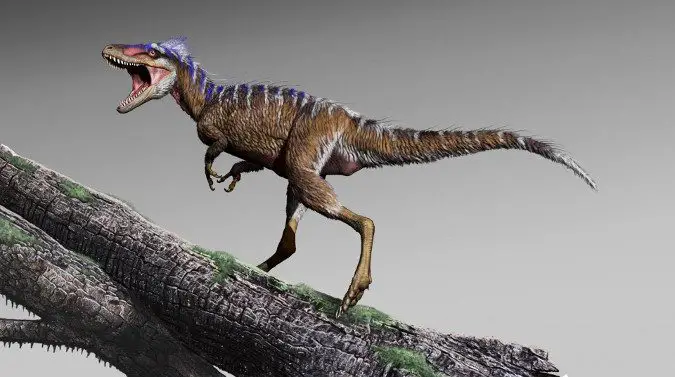Off Topic: What Moros intrepidus reveals about the growth of the Tyrant Lizards

Tyrannosaurus rex means King of the Tyrant Lizards, and it’s an apt name. While there were other theropod dinosaurs that rivaled or possibly exceeded T. rex in size — although the discovery of Scotty helps put T. rex back in contention for the top spot, as it implies that the King never stopped growing and could have exceeded current discoveries in size — there are few that have managed to capture the public interest as the Tyrant Lizard King has. However, the history of the Tyrannosauridae has some pretty big holes in it — for just one example, the controversy over whether or not Raptorex was its own unique species or just a juvenile Tarbosaurus bataar highlights just how much we don’t know about how the coelurosaurs produced such imposing predators. Considering that the coelurosauria included a wide variety of dinosaurs — pretty much every dinosaur more closely related to our modern bird friends than the carnosaurs is a coelurosaur.
So how did the same family that produced robins and eagles also give us dinosaurs as varied as Compsognathus, Bambiraptor and, eventually, Tyrannosaurus rex? The fossil record for the Tyrannosauridae may have some pretty notable holes in it, but thanks to Dr. Lindsay Zanno, we now know more because we know have Moros intrepidus, the earliest member of the Tyrannosauridae found in North America’s Cretaceous fossils (Image credit to Jorge Gonzalez). The name means Intrepid Harbinger of Doom, as Moros not only traveled very far to get where the fossils were found, but it presages the rise of the massive predators that would descend from it.
It’s not just important that Moros is a small Tyrannosaur, although that is pretty cool — we’ve found other small Tyrannosaurs such as Xiangguanlong in Asia. What Moros does is help us establish that the Tyrannosauridae were still small in North America some 96 million years ago and thus, the growth of the Tyrannosauridae went from relatively small dinosaurs like Xiangguanlong and Moros to big beasts like Tyrannosaurus rex in a short sixteen or so million years. It also suggests that there was a land interchange between North America and Asia that allowed dinosaurs like Xiangguanlong to make the trip into Western North America. This tells us that there may well have been something in particular about North America at that time that spurred the rapid growth of the Tyrannosauridae and catapulted them from weighing less than 80 kilograms to topping the scales at more than 8800 kilos. That means that in sixteen million years, these animals exploded to be 110 times the size of their ancestors.
This is an incredible find. While Moros intrepidus isn’t a complete skeleton and there’s a lot more work to be done to connect Moros to later, larger Tyrannosaur species like Appalachiosaurus, Dr. Zanno and her team have moved us one step closer to understanding how the Tyrannosaurs came to change from small, fast predators to enormous apex hunters with teeth and jaws capable of crushing the bones of even the largest of their prey with ease.
Please consider supporting our Patreon!
Join the Discussion
Blizzard Watch is a safe space for all readers. By leaving comments on this site you agree to follow our commenting and community guidelines.
 @MatthewWRossi
@MatthewWRossi



